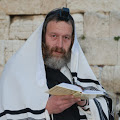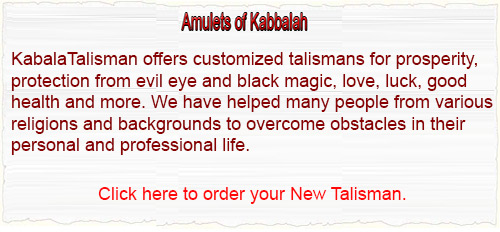White Magick through Kabbalah Spells
 Rabbi David Azulai
Rabbi David Azulai
Black Magic, Jewish mysticism, Kabbalah - Kabbalistic Comments (2)
In the intricate web of mysticism, Kabbalah stands as a profound and esoteric tradition, offering insights into the hidden realms of the universe and the mysteries of existence. While often associated with Jewish mysticism, Kabbalah transcends religious boundaries and delves into the world of magic and spellcasting. One facet of Kabbalah that has captivated the curious and the seekers of spiritual enlightenment is the practice of white magic through Kabbalah spells.
In this exploration of White Magic Through Kabbalah Spells, we will delve into the origins, principles, and applications of this mystical practice, and understand how it harnesses the divine to bring about positive change in the world.
The Essence of Kabbalah
Kabbalah: A form of Jewish mysticism that explores the hidden aspects of the universe, the nature of God, and the spiritual realm.
Kabbalah, which means “to receive” or “to accept” in Hebrew, is a spiritual discipline that seeks to unravel the mysteries of the universe. Its origins date back to early Jewish mysticism, but its influence extends far beyond the boundaries of Judaism. Kabbalah delves into the nature of God, the structure of creation, and the means by which individuals can connect with the divine.
Origins and History: The roots of Kabbalah can be traced to the Jewish mystical traditions of the 12th century in Provence, France, and Spain. It later flourished in the 16th century in the mystical city of Safed in Israel. Over time, Kabbalah has attracted followers from various religious backgrounds, including Christianity, Islam, and New Age spirituality.
Core Beliefs: Kabbalistic thought centers on concepts such as the Ein Sof (the infinite), the Sephirot (divine emanations), and the Tree of Life, which is a fundamental symbol in Kabbalah. The core belief is that individuals can attain a higher level of spiritual understanding and connection to the divine through the study and practice of Kabbalah.
The Intersection of Kabbalah and Magic
Magic: The use of supernatural or mystical forces to influence events or outcomes.
The intersection of Kabbalah and magic is a realm of deep significance. Within Kabbalah, the focus is not on the supernatural for selfish or harmful purposes but on harnessing divine energies for positive, transformative change. This practice is often referred to as “white magic.”
Understanding White Magic: White magic is distinguished from black magic by its intentions. White magic seeks to bring about positive, harmonious change in alignment with the divine, while black magic aims to manipulate or harm. White magic is guided by principles of love, healing, and benevolence, and it often involves rituals, incantations, and spells.
Kabbalah in White Magic: Kabbalah provides a unique framework for white magic. It is considered a powerful tool for connecting with divine energies and understanding the mystical underpinnings of existence. Kabbalistic white magic aligns with the core principles of Kabbalah, emphasizing the elevation of the soul, personal growth, and the betterment of the world.
The Principles of Kabbalistic White Magic
1. Connection to the Divine:
Central to Kabbalistic white magic is the belief in establishing a connection with the divine. Practitioners work to attune themselves to the divine energies, often through meditation, prayer, and contemplation.
2. The Power of Intention:
Intention is a vital component of white magic. In Kabbalah, the power of intention is seen as a force that can shape reality. Practitioners set clear and positive intentions in their rituals to bring about change.
3. The Mystical Language:
Kabbalistic white magic often utilizes the Hebrew language, which is considered a sacred and mystical tongue. The vibration and resonance of Hebrew letters are believed to have profound spiritual significance.
4. Divine Names and Symbols:
Kabbalistic white magic incorporates divine names and symbols, such as the Tetragrammaton (the four-letter name of God) and Kabbalistic diagrams like the Tree of Life. These names and symbols are seen as conduits for divine energy and can be used in spells and invocations.
5. Rituals and Spells:
Kabbalistic white magic involves structured rituals and spells. These rituals often include the use of candles, incense, and specific prayers or invocations. Practitioners follow prescribed steps to create a sacred space and channel divine energy.
6. Alignment with Divine Emanations:
Kabbalistic white magic often seeks to align with the divine emanations, or Sephirot, on the Tree of Life. Each Sephirah represents a different aspect of the divine, and practitioners may work with specific Sephirot to manifest particular qualities or attributes.
Kabbalistic White Magic in Practice
Kabbalistic white magic seeks to bring about positive change in various aspects of life, from personal growth and healing to the betterment of the world. Here are some common
applications of Kabbalistic white magic
1. Healing:
Kabbalistic white magic is often used to promote physical, emotional, and spiritual healing. Practitioners may perform rituals and invocations to invoke divine energies for the restoration of health.
2. Protection:
Protection spells are crafted to shield individuals from negative energies and harmful influences. These spells may call upon the divine names and symbols for safeguarding.
3. Love and Relationships:
Kabbalistic white magic can be employed to attract love and positive relationships. It emphasizes the power of intention to manifest love and harmonious connections.
4. Spiritual Growth:
Many practitioners of Kabbalistic white magic use it as a tool for spiritual growth and self-discovery. By working with divine energies, they seek to elevate their consciousness and align with the divine plan.
5. Blessings and Prosperity:
Spells and rituals focused on blessings and prosperity aim to bring abundance and good fortune into one’s life. Practitioners invoke divine energies associated with abundance and prosperity.
6. Positive Change in the World:
Kabbalistic white magic is not limited to personal goals. It can be used to promote positive change in the world, such as peace, justice, and harmony. Practitioners may channel divine energies toward global healing and transformation.
The Ethical Consideration of Kabbalistic White Magic
Kabbalistic white magic operates within a framework of ethical considerations. The intentions behind the magic are of utmost importance, and practitioners are guided by principles of love, compassion, and spiritual growth. This form of magic is aligned with the broader Kabbalistic goal of unifying with the divine and contributing to the betterment of the world.
Practitioners are encouraged to examine their intentions closely and ensure they are in harmony with the divine plan. White magic in Kabbalah is not about manipulation or self-serving desires but about co-creating with the divine for the greater good.
admin @ February 3, 2010
Order Protection Talisman Now

